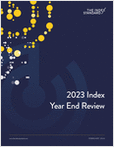A key group of regulators has decided that insurers should use traditional formulas as well as more complicated statistical models when establishing reserves for variable annuity guarantees.[@@]
The Financial Conditions “E” Committee, an arm of the National Association of Insurance Commissioners, Kansas City, Mo., voted here at the NAIC’s summer meeting to approve a proposal for VA risk-based capital requirements that includes use of both a “standard scenario” and “principle-based,” “stochastic” methods in efforts to determine the RBC levels that insurers need to back VA guarantees.
The NAIC’s executive committee and the plenary, or body that includes all voting NAIC members, still must approve the VA guarantee reserves proposal, also known as the C3-Phase II proposal, before the proposal officially can take effect. But many observers say they are sure the proposal will be adopted by the NAIC plenary, and states already are preparing to add the new rules to the instructions for 2005 life insurance company annual reports.
NAIC panels also are holding similar discussions about Actuarial Guideline 38, a model for setting reserves for universal life products with secondary guarantees.
The VA guarantee proposal that the “E” Committee has approved seeks to address the stock price risk, interest-rate risk and expense-recovery risk associated with variable annuities and group annuities that offer death benefits or living benefit guarantees.
Traditionally, regulators have used relatively simple formulas to set VA product reserve requirements.
Some individuals in the insurance community want to stick with a traditional “formulaic approach,” but many insurers and regulators want to shift to a reserve-setting system that would combine use of basic reserving principles, sound actuarial judgment and stochastic models.
“Stochastic” is a term used to describe equations that include randomly changing variables, such as variables that represent shifts in interest rates and stock prices. When actuaries use stochastic models, they can test how product guarantees will perform under hundreds or even thousands of scenarios.
Supporters of a principle-based approach include many insurance commissioners, many life insurers and the American Academy of Actuaries, Washington, which has helped to develop the principle-based approach proposal.
New York regulators have developed a compromise approach that would phase in use of stochastic models but create a minimum floor for risk-based capital levels for VA guarantees, by requiring insurers to use a “Standard Scenario” to compute minimum RBC levels.
Lou Felice, a New York regulator and chairman of the NAIC’s capital adequacy task force, said New York is committed to a principle-based approach but also thinks that a certain conservatism and a phasing in of a principle-based approach is warranted.








 June 15, 2005 at 08:00 PM
June 15, 2005 at 08:00 PM










